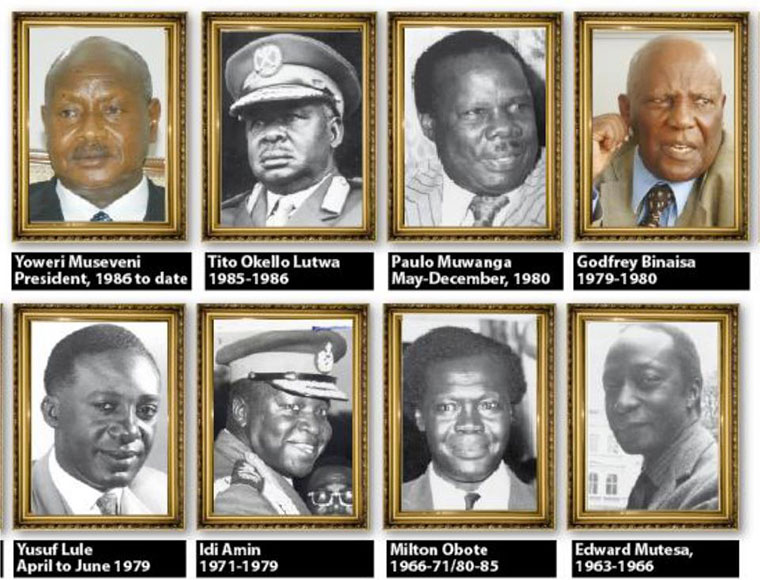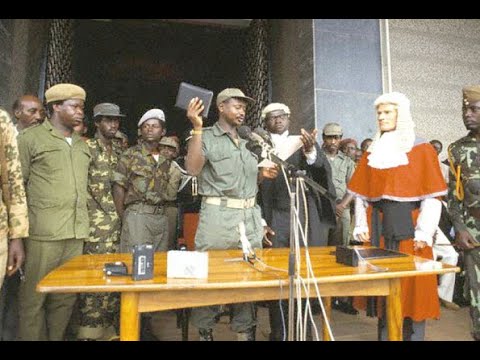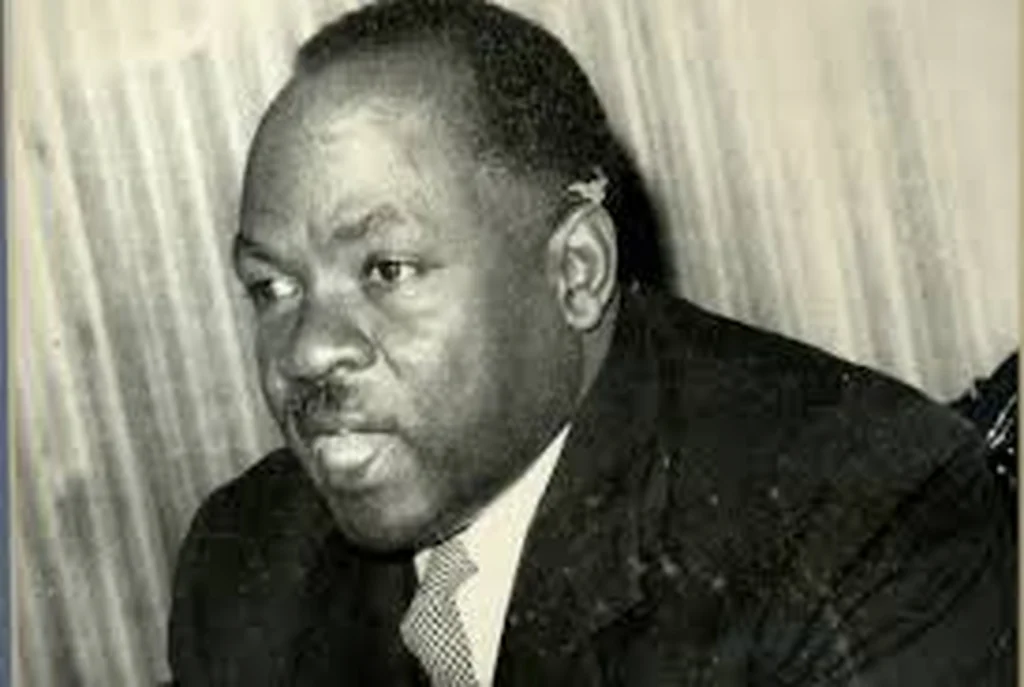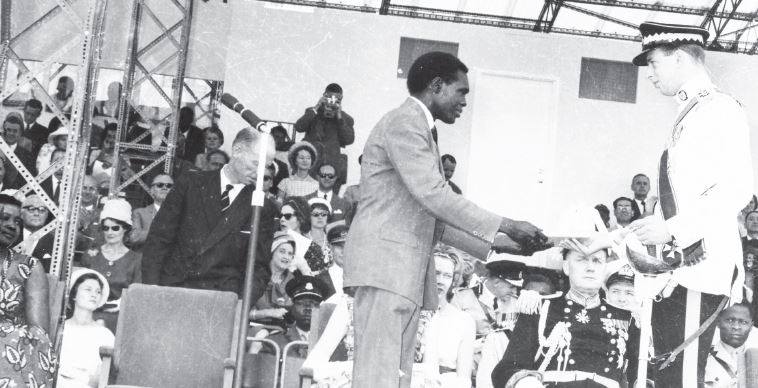On October 9, 2024 Uganda will celebrate 62 years of self-rule under the theme “Independence Day: A Recommitment to Secure and Fortify our Destiny”.
Background
On October 9, 1962, the Duke of Kent, handed over Instruments of Power for our Independence to Dr. Milton Obote on behalf of Her Majesty the Queen of the United Kingdom of Great Britain. Thousands of Ugandans converged at Kololo Independence Grounds at midnight of the 9th of October, 1962. These were part of the historic moment to witness the lowering of the British Union Jack and maiden hoisting of the Black, Yellow, Red Flag of the independent Uganda.
Prior to granting Uganda independence, the period from 1940 to 1954 marked an era of political re-awakening for self-rule in the Country. This process started when the Colonialist were pressurized by the indigenous people to allow the three prominent Ugandans to join the Legislative Council in 1945 and these included; Mr. Michael Earnest Kawalya Kaggwa (Katikiro of Buganda Kingdom), Mr. Petero Nyangabyaki (Omuhikirwa of Bunyoro Kingdom) and Mr. Yekonia Zirabamuzaale (Secretary General of Busoga Kingdom).
Besides, the struggle led by the late Ignatius Musaazi; late Kivu, late James Miti and the late Semakula Mulumba started around the same time. Other than these initial efforts, some other Ugandans had started a local movement called the Batakabbu in the late 1940s whose objective was to fight against suppression of rights of the indigenous communities by Colonialists. These agitated to be allowed to process Cotton and Coffee as well as access loans from the first Savings and Credit Bank which was then a preserve of Europeans and Asian Traders. These early efforts eventually led to the formation of Uganda National Congress (UNC) in 1952 which was later followed by the Democratic Party in 1954.
Motions demanding independence were also being moved from time to time by Y.S. Bamutta of UNC from Masaka; Dr. B.N. Kununka, Milton Obote, George Magezi, Cuthbert Obwangor, William Rwetsiba, Balaki Kirya, Joyce Mpanga and others. These were the main speakers in the Uganda Legislative Council (LEGCO) on the motions demanding independence. The other notable persons who contributed towards attainment of Independence included: late Ruande, Yekosofat Engur and Apollo Kironde among others. The late Ruande was leading the Labour Union in Uganda which also had network with Labour Union in Kenya which was led by late Tom Mboya. Their effort had earlier led to the formation of the Uganda National Congress which was led by the late Ignatius Kangave Musaazi and late Abukar Mayanja as the Secretary General followed by the Democratic Party.
In 1955, after the return of the Kabaka of Buganda from exile, the 1955 Namirembe Agreement was promulgated where among the many issues, Uganda would become Independent after six years. This finally led to the expansion of LEGCO in 1958 to sixty Members which set pace for self-governance in March 1961 led by late Ben Kiwanuka and eventually the interim government that led to the elections of April, 1962. This watershed moment has been and continues to be the central point of our national unity; political and socio-economic direction.
The peaceful gaining of Independence from British Colonial rule notwithstanding; Uganda’s immediate post-Independence political history was characterised by putsches, dictatorship, contested electoral outcomes and civil wars. There were eight changes of government within a period of twenty-four years (from 1962-1986), five of which were violent and unconstitutional.

Colonialism had far-reaching social, economic, and political impact. It bequeathed the country a negative legacy of ethnic division, skewed development, elite polarisation, a narrow economic base, and a weak State apparatus. Rather than reversing this negative legacy, immediate postcolonial leaders in Uganda made it worse by formenting further ethnic division and conflict; adopting an uncompromising approach to issues of national importance and adopting disastrous economic policies such as move to the left of 1969, 1970 Nakivubo pronouncement for Nationalisation of Companies and unplanned expulsion of Asians in 1972. This further weakened an already weak state apparatus, and the consequences of such moves were recurrent violence, economic decline and stagnation, and perennial political instability.
The false start and exactly what went wrong
Uganda’s post-independence history of conflict and war was profoundly shaped by its colonial experience. The single most important fissure, which repeatedly inhibited elite unity, was that between some Baganda monarchists and other ethnic groups, especially between some Baganda elite monarchists and aspirant elites from other regional/ethnic backgrounds.
No immediate post-independence regime was able to secure peace and stability in the country without accommodating the interests of the Buganda monarchy. The Baganda elites generally saw the monarchy as representing their own interests including control over some of the most productive lands as well as having privileged access to education and other resources underpinning their wealth as well as social dominance. Republican coalitions under Milton Obote during his first and second period of government saw efforts to consolidate power at the level of the State. While the authoritarian regime of Idi Amin violated the human rights and democracy.
By the time NRM captured Power in 1986, Uganda was a failed State. The Government of NRM came up with a Ten Point Programme which has now transformed this Country from a backward poverty stricken bedeviled by Political, Social and Economic conflicts. Nonetheless, neocolonialism was more prevalent after independence which affected our self-determination; politically, economically and socially.
The failure of successive regimes to build effective and disciplined armed forces within the state created more problems to the subsequent governments. Again, post-independence state builders were not able to break from dysfunctional patterns bequeathed by the colonial authorities whereby ethnic minorities were over-represented in the military and police. Indeed, Obote’s reliance on the military to achieve his political objectives both reinforced the ethnic character of the military (diminishing its legitimacy) and politicised the military.
The short-lived Uganda National Liberation Front (UNLF), which overthrew the Amin regime with the backing of Tanzania Peoples’ Defence Forces, again failed to build a unified, disciplined and inclusive army across ethnic and regional divides, likewise Obote during his second rule of government also failed. One important reason for President Museveni’s success in consolidating peace was due in no small part to the creation of a disciplined armed force, which broke from past patterns of ethnic recruitment.
President Yoweri Museveni and the taming of the “the mad tiger” Uganda

President Yoweri Kaguta Museveni is a man of strong convictions and rare courage. He takes risks and pursues national interests above his personal comfort and safety. He is a results-oriented leader, whose calling to politics is born out of deep and unwavering commitment to finding lasting solutions to the challenges of society basing far back from 1964 when he was a student at Ntare High School.
He displays exceptional understanding of the historical and social challenges of African societies. This is what inspired his direct involvement in the liberation and emancipation of his countrymen and women.
His political awareness and ideological orientation became more focused during the three years (1967 to 1970) he spent at the University of Dar es Salaam. The university provided a very conducive atmosphere for Pan-Africanism and anti-imperialism. While there, he became the president of the University Students’ African Revolutionary Front (USARF), a forum that provided him mentorship from President Julius Nyerere, and besides reading Books of the Walter Rodney who was the Lecturer by that time at Dar es Salaam University, who wrote a Book on ‘How Europe under developed Africa’ and other Writers like Frantz Fanon who wrote a Book called ‘the Wretched of the Earth’ and other News Letters by Chairman Mao Tse-tung. His interaction with late Eduardo Mondlane of Mozambique and Mohamoud Abdulrahman, first Minister of Foreign Affairs of Tanzania after Independence also shaped his political awareness.
There it is while at this university that he developed far-reaching Pan-Africanist and revolutionary ideas. President Museveni was instrumental in forming FRONASA (Front for National Salvation), which was the core among the 23 fighting groups, together with the Tanzanian People’s Defence Forces, ousted Idi Amin’s regime in April 11, 1979.
On 29th January 1986, Gen. Yoweri Kaguta Museveni became President of the Republic of Uganda after leading a protracted five-year liberation struggle that started out with only 27 guns. Upon coming to power, he laid a firm foundation for reconciliation and national harmony, proving that people of differing cultural, religious and political allegiances can form a broad-based government.

Since 1986, the NRM, under the leadership of President Museveni has demonstrated the revolutionary effect that good leadership can have on a country. He inherited a country and an economy in ruins. The colonial enclave economy had almost disappeared by the time the NRM took power. Under President Museveni’s leadership, the NRM initiated socio-economic policies designed to combat key challenges, including insecurity of person and property, extra-judicial killings, and rampant shortages of essential commodities.
Uganda, under President Museveni’s leadership, has registered tremendous and steady progress in all sectors of the economy. The size of the economy has grown close to tenfold since 1986. The GDP per capita has quadrupled. Ugandans today live healthier and longer lives. They are better educated. Children no longer die of preventable diseases and are attending school free of charge. Infrastructure has tremendously improved. The total tarmacked road network has increased five-fold, including the Musita – Mayuge – Namayingo – Busia Road. Electricity shortages are no more, instead the country is exporting surplus power to the neighboring countries. Tele-communication has improved, almost every adult has a phone.
Uganda has significantly contributed to continental and regional peace, security and stability. For instance, Uganda supported the African National Congress (ANC) of South Africa by hosting ANC fighters and training them for the liberation of South Africa against apartheid. Uganda also contributed to the restoration of peace in Rwanda, resettlement of refugees who had spread across East Africa and ending the genocide.
Under the leadership of President Museveni, the Uganda People’s Defence Forces (UPDF) has played a vital and positive role in ensuring peace in the Democratic Republic of Congo, South Sudan, Somalia, Sierra Leone, Liberia and Central African Republic.
Today, Uganda is a host to about 1.5 million refugees because it is a safe country, unlike the days when her own people filled the refugee camps in the region. Uganda has been lauded internationally as a model for its refugee hosting policy.
President Museveni is a strong advocate of African unity and integration. He is among the African statesmen increasingly credited for championing African unity. Indeed, African diplomats fondly refer to him as “the African Bismarck”. He is driven by the urgent need to permanently cure Africa’s vulnerable position in the global arena of economic and political giants.
He is deeply concerned that Africa is still an easy prey for plunder and marginalisation, as long as the strides towards economic and political integration remain lethargic. This explains his passionate fight against the subsistence mindset of our communities, and championing prioritisation of infrastructural development, in addition to his efforts towards the pacification of conflict-ridden neighbours and tireless call for regional integration. His transformative leadership has earned him several accolades.
On January 21, 2020, President Museveni received The African Leadership Magazine Award, in London, in honour of his contribution to the liberation struggles of Africa and good leadership skills. He has therefore, successfully ensured security, democracy and delivery of social services for the betterment of Ugandans. It is no accident, therefore, that Uganda is today enjoying peace from corner to corner of the country and with its neighbours.
The economy
Uganda’s economy has been impressively growing by average of 6 percent over the 30 years. As a result of this robust growth, the size of the economy is now estimated at Shs 202 trillion (USD 53.3 billion), and our target for the next 15 years is Shs. 500 trillion. If Ugandans agreed to share this GDP equally, each citizen would enjoy a GDP per capita of USD 1,146. The improved performance of the economy is on account of higher growth in all sectors. Services, agriculture, and industry, are estimated to grow at 6.6 percent, 5.1 percent, and 5.8 percent, respectively. In particular, growth in the services sector has been impressive, mainly driven by strong recovery in retail and wholesale trade, tourism as well as communication and real estate activities. Growth in industry was mainly driven by manufacturing, construction and mining, while increased production of food and cash crops, as well as livestock supported growth in the agriculture sector. Agriculture’s performance is estimated to have expanded at 5.1 percent this year. This is also attributed to streamlined implementation of the Parish Development Model (PDM) and SACCOs.
Health
Access to and utilization of health services has significantly increased with the population living within a 5km radius of a health facility increasing to 86 percent in the recent years. The health infrastructure network has improved in the country and currently consists of 2 national referral hospitals, 19 regional referral hospitals, 193 HC4s (medical officers present), and 1250 HC3s (clinical officers present).
Significant progress has also been made in the provision of specialized medical care in cardiology and gynecology. A modern state of the art women’s hospital with a capacity of 320 beds was opened in Mulago in 2018. The heart and cancer institutes of Mulago Hospital have also been expanded and improved. This has increased access and utilization of health services. In-patient malaria deaths have reduced tremendously largely due to the effective distribution of insecticide treated nets (ITNS). HIV deaths have been reduced by 64% since the peak in 2004.
In addition, infant mortality has gone down to 33 deaths per every 1000 live births. Maternal mortality decreased from 336 deaths per 100,000 live births, and stunting has reduced from 33 percent to 29 percent, respectively. The aggregate impact of all this has been the increase in life expectancy by 9 years to 63.3 years.
Transport infrastructure
The total paved national road network stands at 6,338 km, representing over 30 percent of the national road network. More focus is now on maintaining of the existing roads, building of a few new strategic roads, accelerated rehabilitation of the Metre Gauge Railway, and commencement of construction of the Standard Gauge Railway. Entebbe International Airport has also been expanded and modernized to match global standards and another International Airport in Hoima (Kabalega) is in completion stages. This heavy investment in the Transport sector has been part of the modernization of agriculture and improved household incomes.
Energy Development
The country’s power generation capacity has increased by 600MW from 1,378.7MW to 1,978.1MW following the connection of Karuma Hydropower Dam to the national grid. The electricity transmission capacity has now increased to 4,218 km of high voltage from 3,500 km in 2020. Electricity shortages are no more, instead the country is exporting surplus power to the neighboring countries.
Industrial development and manufacturing
Uganda’s tenfold growth strategy is stepping up efforts to accelerate diversification of the economy, add value to raw materials to boost exports and import substitution to continue reducing our import bill, and also build more basic industries to produce items that Ugandans use on daily basis such as sugar, soap, cooking oil, clothes, medicines, construction materials, etc. Our industrialisation efforts are being undertaken mainly through the private sector, but with the State playing a de-risking role. Government through the Uganda Development Corporation (UDC), is undertaking targeted investments to increase Uganda’s manufacturing capacity. This intervention basically is aimed at improving our exports and decreasing the imports, so as to attain a stable balance of payment.
Information and Communications Technology (ICT)
The following have been achieved in the ICT sector: i) A total of 4,354 Km of optic fiber cable have been laid across the country connecting 1,523 key Government service delivery units to the National Backbone Infrastructure; ii) The internet penetration in the country has increased to 64 percent, and the share of Government services provided online is now at 40 percent. A PDM Information System has been developed and rolled out in all the 10,585 parishes across the country.
Finally, as we celebrate 62 years of Independence, we need to keep the momentum and if need be double our effort to fully transform and fortify the economic development and economic growth of our motherland Uganda. The fundamentals of our economy have been worked on, it is now poised to accelerate towards takeoff, powered by value addition to our agricultural raw materials and the abundant natural resources as well as growth in industry, tourism and innovations by our scientists.
Finally, it is our plea that majority of Ugandans should fully engage in Agriculture and Animal Husbandry, and desist from culture of laziness and work hard to improve their household income.
The Theme for the celebrations is “Independence Day: A Recommitment to Secure and Fortify our Destiny”.
References for your use as you celebrate independence
Karugire, S.R. 2003. Roots of Political Instability in Uganda. Kampala: Fountain Publishers.
Kasozi, A. B. K. 1994. The Social Origins of Violence in Uganda. Kampala: Fountain Publishers.
Kyemba, H. 1997. A State of Blood: The Inside Story of Idi Amin. Kampala: Fountain Publishers.
Mutibwa, P. 1992. Uganda Since Independence: A Story of Unfulfilled Hopes. London: Hurst and Co. Publishers.
Museveni, Y. K. 1997. Sowing the Mustard Seed: The Struggle for Freedom and Democracy in Uganda. Oxford: Macmillan Education.
Golooba-Mutebi, F. 2007. ‘Uganda in 2005: Political, economic and social trends’, in H. Charton and C. Médard (eds), L’Afrique Orientale: Annuaire 2005. Paris: L’Harmattan.








